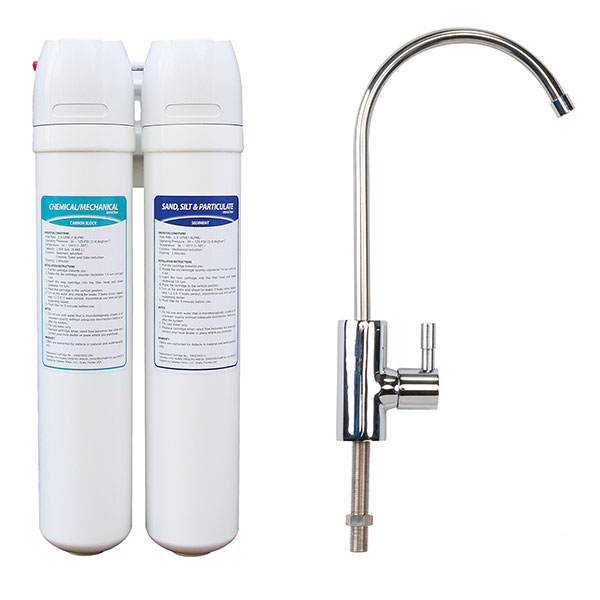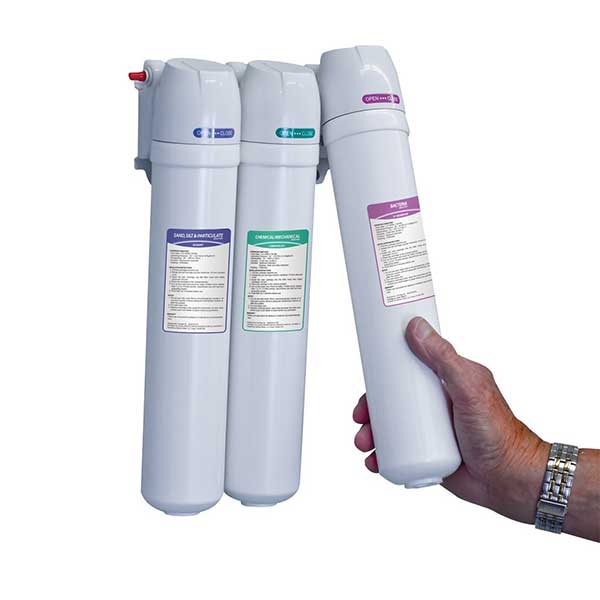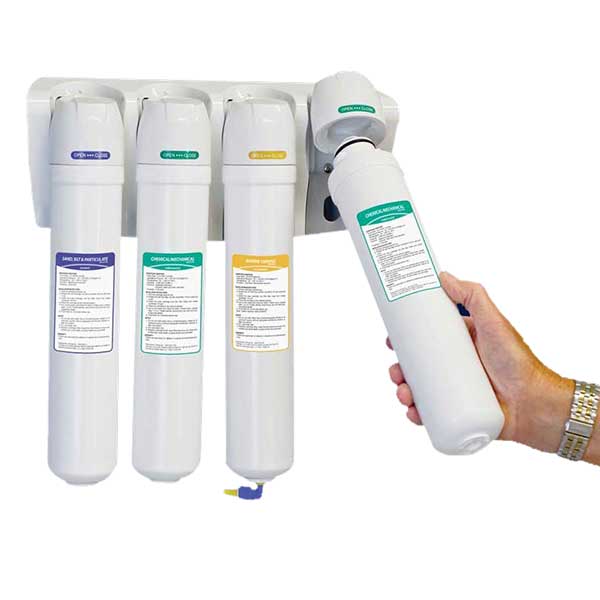What Is Arsenic & How to Remove Arsenic from Your Water?
Arsenic isn’t one of the regular words in our everyday vocabulary. Unfortunately, the presence of Arsenic in the water we drink every day can be harmful to our health and lives. Here, we will provide you with all you need to know about Arsenic, the effects of Arsenic in water, as well as how to remove Arsenic from water.
What is Arsenic?
Arsenic is a chemical element represented with the symbol, As. It occurs naturally in many minerals, mostly in combination with sulfur and metals, and also as a pure crystal.
Arsenic is also a byproduct of copper smelting, coal combustion, and mining. Economic uses of arsenic include combining it with other chemical elements for the preservation of wood and pest control on crops such as cotton, amongst others.
The level of Arsenic concentration in nature differs by geographical regions due to human activities such as metal mining or uncontrolled use of pesticide.
Is Arsenic Harmful?
As a naturally occurring semi-metallic chemical element, Arsenic is found globally, especially in groundwater. It is also not very common to find a toxic level of Arsenic in nature. So does Arsenic contaminate water?
Well, the natural existence of Arsenic is not immediately dangerous to humans or the environment. However, when present in water to a certain level; either by natural existence or deliberate human actions, Arsenic becomes a dangerous contaminant.
Arsenic Poisoning
Arsenicosis, also known as Arsenic Poisoning, occurs when water or food containing high levels of Arsenic is extensively consumed to the point where it becomes harmful to the body. Arsenic poisoning can lead to severe health problems, such as cancer, liver diseases, coma, and even death if not detected early and treated.
One unique quality that makes Arsenic particularly dangerous is the fact that it is odorless and tasteless, just like water. So it can be ingested to a dangerous level without knowing. Arsenic poisoning also quite common in areas of industrialization, provided that people live or work there.
Health Dangers of Arsenic Poisoning
There are symptoms of Arsenic Poisoning. They include drowsiness, headache, confusion, and severe diarrhea. These symptoms do not necessarily mean exposure to Arsenic poisoning, but they are signs that may occur within half an hour of ingesting Arsenic. More symptoms associated with severe Arsenic Poisoning include garlicky breath and a metallic taste in mouth, excess salivation, blood in urine, cramping muscles, hair loss, stomach cramps, convulsion, excessive sweating, vomiting, and diarrhea. Arsenic poisoning affects the skin, liver, lungs, and kidney. Late stages of the poisoning are seizure and shock, which could lead to coma or death. It is advisable to consult a doctor if any of these signs develop rather than assume that it is a result of Arsenic poisoning.
How Do You Know If Arsenic Has Contaminated Your Water?
Since Arsenic has both properties of being tasteless and Odorless, there is no conventional method on how to detect Arsenic in water. However, having seen how dangerous it is to health, we must ensure that Arsenic does not poison the water and food we ingest.
The most reliable method of detecting Arsenic is only by professional, scientific testing of suspected contaminated water in a Laboratory. Only a professional can answer the question – ‘Is Arsenic present in my water?’
There are so many companies that render water-testing and purification services. We recommend contacting any of such companies to verify the safety and quality of your drinking water.
How to Remove Arsenic from Your Water
Natural occurring Arsenic dissolves out of certain rock formations as groundwater level significantly drop. However, the cause of Arsenic poisoning is from certain industries in the United States, which releases substantial quantities of Arsenic into the environment year after year. These deposits remain in the environment for a long time.
The following methods provide information on how to remove Arsenic from water;
Things to know before deciding a method for removing Arsenic from your water
You should professionally examine your water before considering the measures to take for removal of Arsenic from water. This approach helps in identifying poisonous sources of Arsenic and a reliable remedy or solution to Arsenic Contamination, as the presence of other contaminants might hinder the effectiveness of Arsenic treatment.
While no toxic level is safe, the Environmental Protection Agency (EPA) has set the acceptable drinking water standard of Arsenic to 10ppb (parts per billion). Therefore, if the Arsenic level of your water exceeds the set level then consider installing an Arsenic removing system in your home.
Arsenic in water is of two types: ‘Arsenic 3’ and ‘Arsenic 5’. So knowing the type of Arsenic contaminating your water is important because it also determines the kind of solution to enforce. ‘Arsenic 3’ is very difficult to remove from water and has to be “oxidized” to “arsenic 5” before removal. Only a proper water examination can determine the type of Arsenic present in your water but at extra cost. Chlorine is the most readily available oxidant that converts Arsenic 3 to Arsenic 5 before removal. Other oxidants that can be used include Hydrogen Peroxide and Ozone.
It is also important to decide between a Point-of-Use (at a specific tap) Arsenic treatment or a whole house Arsenic Treatment.
Methods of Removing Arsenic from Water
Arsenic removal methods or systems have their various advantages and disadvantages, some of the methods include;
Anion exchange: Anion exchange units employ the same principle as a water softener, exchanging Arsenic for chloride. This system is generally used to treat water for the entire house and usually needs little maintenance.
Reverse osmosis: is a point-of-use treatment system, which demands pre-filtration against sand and grit that might hinder the system. This method is, however, not effective for removing Arsenic
Activated Alumina: is a type of adsorptive media used as point-of-use or point-of-entry treatment. But it is not always efficient at removing Arsenic 3 from water. The adsorptive media is usually replaced every six months. This system is more expensive
Another type of methods for removing Arsenic from water is Ultra-filtration. Methods such as reverse osmosis, ultra-filtration, distillation, or ion exchange, are usually used to treat water at a point of use only.
As a preventive measure against Arsenic water, in regions of high rainfall where rainwater is mostly collected, precaution should be taken to avoid Arsenic contamination. Constructing deeper wells reduce the likelihood of Arsenic water.
In conclusion, heating and boiling water will not remove Arsenic. It might even increase the concentration of Arsenic in water. Chlorine (bleach) disinfection cannot remove Arsenic from water either. Therefore, it is highly recommended to get the assistance of a professional to detect and implement the best solution to control Arsenic contamination for you.
Feel free to contact us any time for more information on the best Arsenic removal filter to remove Arsenic and other contaminants from your water. We would love to hear from you.





